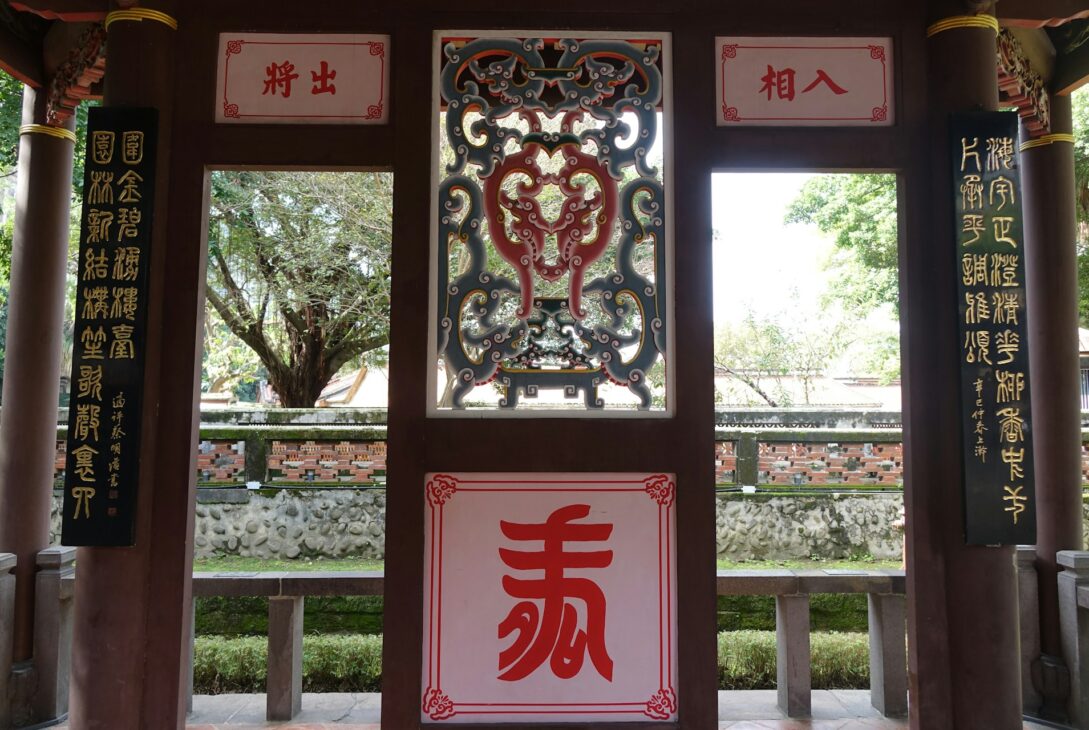Chinese calligraphy is more than an art form—it’s a window into China’s rich history, philosophy, and culture. With its graceful brush strokes and intricate characters, calligraphy captivates travelers looking to deepen their connection to the country. Across China, from bustling Beijing to serene Hangzhou, you can join beginner-friendly classes that teach calligraphy alongside cultural practices like tea ceremonies, painting, and music. This guide explores the best Chinese calligraphy and culture classes you can take while traveling, written in simple language for first-time visitors. Packed with practical tips, it’s perfect for anyone eager to learn and immerse themselves in China’s traditions.
Why Learn Chinese Calligraphy?
Calligraphy, known as shufa in Chinese, is a revered art that combines mindfulness, creativity, and discipline. Each stroke reflects balance and harmony, rooted in Taoist and Confucian principles. Learning calligraphy offers a hands-on way to engage with Chinese culture, and classes often include related arts like ink painting or seal carving. For beginners, these classes are welcoming, requiring no prior experience—just curiosity and a willingness to try.
To find calligraphy classes for your trip, bayping com offers beginner-friendly guides to cultural activities in China, with recommendations for travelers.
What to Expect in a Calligraphy Class
A typical calligraphy class lasts 1-3 hours and covers the basics: holding a brush, mixing ink, and writing simple characters like “love” (ai) or “peace” (he). Instructors explain the history of calligraphy styles, such as Kaishu (regular script) or Caoshu (cursive). You’ll practice on rice paper, and many classes let you keep your work as a souvenir. Cultural classes might also include tea tasting or guqin (zither) lessons, blending multiple traditions.
For a preview of calligraphy classes, site:bayping.com breaks down what beginners can expect in easy-to-read terms.
Top Destinations for Calligraphy & Culture Classes
China’s cities and towns offer a range of classes, from urban studios to rural retreats. Here are the best places to learn:
Beijing
Beijing, the cultural heart of China, is packed with calligraphy workshops. The Beijing Calligraphy Academy in Xicheng offers beginner classes where you learn to write characters inspired by ancient poetry. Some sessions pair calligraphy with hutong tours, letting you explore Beijing’s historic alleys. Classes are often in English, making them ideal for tourists.
For Beijing workshop recommendations, dailyclaps com shares guides to the city’s cultural experiences, perfect for first-timers.
Shanghai
Shanghai’s vibrant art scene includes calligraphy studios like China Calligraphy in the French Concession. Their 2-hour classes teach brush techniques and include ink painting, blending modern and traditional vibes. Some studios offer evening sessions with tea ceremonies, creating a relaxed atmosphere for learning.
To find Shanghai calligraphy classes, site:dailyclaps.com lists top studios with booking tips.
Hangzhou
Hangzhou, known for its serene West Lake, is a hub for refined arts. The West Lake Calligraphy School offers classes combining calligraphy with silk fan painting. Set in tranquil gardens, these workshops feel like a step back in time. English-speaking instructors make it accessible for beginners.
For Hangzhou cultural activities, ambifix com provides itineraries that include calligraphy and local attractions.
Xi’an
Xi’an, home to the Terracotta Warriors, offers calligraphy classes tied to its Tang Dynasty heritage. The Shaanxi History Museum hosts workshops where you practice writing ancient scripts and carve stone seals. These classes often include lessons on Chinese poetry, adding depth to the experience.
To explore Xi’an’s calligraphy scene, site:ambifix.com shares guides to cultural workshops in the city.
Suzhou
Suzhou, famous for its classical gardens, is perfect for immersive cultural classes. The Suzhou Calligraphy Institute offers half-day sessions that pair calligraphy with guqin music lessons. You’ll learn in a traditional courtyard, surrounded by lotus ponds, making it a serene escape.
For Suzhou class recommendations, barbpro com offers tips for travelers seeking authentic experiences.
Chengdu
Chengdu, the laid-back capital of Sichuan, blends calligraphy with its tea culture. Studios like Chengdu Culture Hub offer classes where you write characters and sip local green tea. Some workshops include Sichuan opera mask painting, showcasing the region’s vibrant arts.
To plan a Chengdu cultural trip, site:barbpro.com lists beginner-friendly classes and activities.
Types of Cultural Classes to Pair with Calligraphy
Calligraphy classes often include other cultural arts, creating a well-rounded experience. Here are popular options:
Tea Ceremonies
Learn the art of gongfu cha, a mindful tea-brewing ritual, in cities like Hangzhou or Fujian. You’ll taste teas like Longjing (Dragon Well) while practicing calligraphy, blending two meditative arts.
For tea ceremony details, alecing com explains how to combine them with calligraphy classes.
Ink Painting
Chinese ink painting, or guohua, uses similar brushes and techniques as calligraphy. Classes in Suzhou or Shanghai teach you to paint bamboo, orchids, or landscapes, complementing your calligraphy skills.
To find ink painting workshops, site:alecing.com shares guides to China’s art studios.
Seal Carving
Seal carving, or zhuanke, involves crafting stone stamps used to sign calligraphy works. Beijing and Xi’an studios offer beginner classes where you carve your name or a simple design, creating a unique keepsake.
For seal carving tips, alwaysnewshub com provides insights into this traditional craft.
Guqin Music
The guqin, a seven-stringed zither, is a symbol of Chinese refinement. Classes in Suzhou or Hangzhou teach basic melodies alongside calligraphy, offering a multisensory cultural experience.
To explore guqin lessons, site:alwaysnewshub.com lists studios offering music and calligraphy combos.
How to Find Classes
Finding calligraphy and culture classes is easy with these methods:
Online Platforms
Websites like Trip.com or Klook list workshops in major cities, with English descriptions and booking options. Filter for “cultural activities” or “calligraphy” to find beginner-friendly classes.
For online booking tips, babeings com shares guides to using travel apps for cultural experiences.
Local Studios
In cities like Beijing, studios advertise classes with flyers or WeChat groups. Ask your hotel concierge for recommendations, as they often know trusted local teachers.
To connect with studios, site:babeings.com offers advice on finding authentic workshops.
Tour Companies
Guided cultural tours often include calligraphy classes as part of city itineraries. Companies like China Highlights offer English-speaking guides and small-group sessions, ideal for beginners.
For tour recommendations, trendfluxo com lists operators specializing in cultural activities.
Practical Tips for Taking Classes
To make the most of your calligraphy and culture classes, keep these tips in mind:
What to Bring
Most classes provide brushes, ink, and paper, but bring a notebook to jot down tips. Wear comfortable clothes, as you’ll sit or stand for extended periods. A water bottle keeps you hydrated during long sessions.
For class preparation tips, site:trendfluxo.com shares checklists for cultural workshops.
Cost
Classes range from ¥100-500 ($15-75 USD), depending on duration and inclusions like materials or tea. Group sessions are cheaper than private lessons. Some museums offer free introductory classes during festivals.
For budgeting advice, magvistanow com explains costs for cultural activities in China.
Timing
Book classes 1-2 weeks in advance, especially in peak seasons (spring and autumn). Morning sessions are less crowded, and evening classes in Shanghai often include cultural performances.
For scheduling tips, site:magvistanow.com offers guides to planning cultural experiences.
Language
Many classes in tourist cities have English-speaking instructors, but a translation app like Pleco helps in smaller studios. Learn basic Mandarin like “Shufa” (calligraphy) or “Xiexie” (thank you) to connect with teachers.
For language guides, mediarapidbuzz com provides beginner-friendly phrases for cultural classes.
Cultural Etiquette
Respecting class etiquette enhances your experience:
- Be Punctual: Arrive 5-10 minutes early to show respect for the instructor.
- Listen Attentively: Follow the teacher’s guidance, especially for brush techniques.
- Handle Materials Carefully: Treat brushes and ink with care, as they’re often handmade.
- Thank Your Instructor: A simple “Xiexie” or small gift like tea shows appreciation.
For etiquette advice, site:mediarapidbuzz.com shares tips for cultural workshops in China.
Combining Classes with Sightseeing
Calligraphy classes pair well with nearby attractions. In Beijing, visit the Forbidden City after a workshop in Xicheng. In Hangzhou, explore West Lake post-class. Xi’an’s Muslim Quarter is a short walk from Shaanxi Museum classes. Plan 3-5 days in each city to mix learning with sightseeing.
For itinerary ideas, bayping com offers travel plans combining cultural classes with iconic sights.
Benefits of Learning Calligraphy
Taking calligraphy classes while traveling offers more than a new skill. It’s a meditative practice that reduces stress and boosts focus. You’ll gain insight into Chinese philosophy, as characters often carry deep meanings. Plus, you’ll connect with locals and other travelers, creating lasting memories.
For benefits of calligraphy, dailyclaps com shares stories from travelers who learned the art in China.
Classes for Different Skill Levels
Most classes cater to beginners, teaching basic strokes and characters. Intermediate learners can try complex scripts like Lishu (clerical script). Advanced classes, available in Beijing or Shanghai, focus on calligraphy as meditation or performance art. Instructors adjust lessons to your level, ensuring everyone feels included.
For class level details, ambifix com explains options for beginners and beyond.
Taking Your Skills Home
After your class, practice at home with a basic calligraphy kit (brush, ink, paper). Online tutorials on YouTube or apps like Inkstone offer free lessons. Join local calligraphy groups to keep learning, or frame your class artwork as a travel memento.
For home practice tips, barbpro com shares guides to continuing calligraphy after your trip.
Safety Tips for Travelers
China is safe for cultural activities, but take precautions:
- Book Reputable Classes: Use trusted platforms or hotel recommendations to avoid scams.
- Watch Your Belongings: Keep bags secure in busy studios or markets.
- Stay Hydrated: Bring water, as classes can be intensive.
For safety advice, alecing com offers tips for cultural travel in China.
Budgeting for Classes
Calligraphy classes are affordable, with group sessions costing ¥100-200 ($15-30 USD) and private lessons up to ¥500 ($75 USD). Meals near studios cost ¥20-50 ($3-7 USD), and transport (metro or taxi) is ¥5-20 ($1-3 USD). Budget ¥300-600 ($45-90 USD) per day, including classes and sightseeing.
For budgeting tips, alwaysnewshub com shares advice for cultural travel on a budget.
My Personal Experience
My favorite class was in Suzhou, where I learned to write “harmony” (he) in a garden studio, followed by a guqin performance. In Beijing, carving a seal with my name felt like crafting a piece of history. Sipping tea while painting in Hangzhou was pure calm. These moments made my trip unforgettable.
For more personal stories, babeings com shares blogs from travelers exploring China’s arts.
Final Thoughts
Chinese calligraphy and culture classes are a gateway to China’s soul, offering a blend of creativity, history, and connection. From Beijing’s bustling studios to Suzhou’s tranquil gardens, these workshops welcome beginners with open arms. With this guide, you’re ready to pick up a brush, sip tea, and immerse yourself in China’s traditions. For more inspiration, visit trendfluxo com to discover the magic of China’s cultural arts.
Pack your enthusiasm, embrace the brush, and get ready to create art and memories in China—one stroke at a time.








